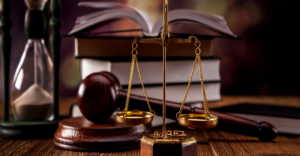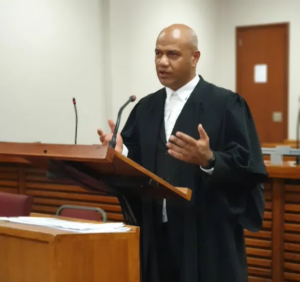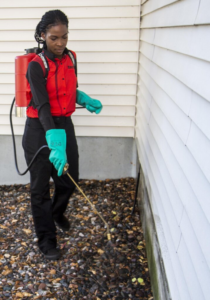Pests can be a real nuisance in and around your home. Getting rid of them requires careful planning and the right strategy. Click here to Learn More.
Natural forces affect all organisms, causing their populations to rise and fall. These can include climate, natural enemies, and available food and water—some methods of pest control attempt to influence these factors.

Pest identification is the first step in assessing pest problems and developing appropriate integrated pest management strategies. Whether the pest is an insect, weed, microbe, or vertebrate animal, a proper diagnosis and effective control methods depend on correctly identifying the species present. Incorrect identification can lead to unnecessary expenditures of time and resources on inappropriate control tactics that may harm people, other organisms, or the environment.
Proper pest identification can be difficult, as many different species look similar, and some develop or grow differently during their life cycles. Some also have specific damage patterns that can be mistaken for the damage caused by other types of pests.
Using the Internet can provide an excellent source of information to help identify pests. Some Web sites provide photos of common pests that can be compared to the pest in question; other Web sites offer identification tools that are more specific, including the pest’s order and scientific name. Other printed guides are available at library and Cooperative Extension Offices and can be useful for determining pest characteristics, habitat requirements, damage symptoms and prevention or control methods.
The accuracy of pest identification is critical, as different pests require different management techniques. For example, leafminers from the order Lepidoptera will respond to different types of insecticides than other leafminers, and insecticides that are approved for use against one type of pest may be ineffective against others.
In addition, if the pest is an insect, it must be identified to the order in which it belongs to determine the correct biological insecticides to use against it; for example, Bacillus thuringiensis is effective on some butterfly and moth pests but not others. Incorrect identification of plant diseases and fungi also can lead to unnecessary use of chemical controls that can reduce the quality of crops or cause human health hazards.
If you cannot properly identify a pest, contact your local county Extension Service or a pest management professional. They may be able to advise you of additional sources of information and provide identification services for a fee.
Pest Prevention
Pests are more than just a nuisance, they can also be dangerous to humans and pets. They can carry disease and cause serious damage to homes and businesses. A proper pest control program can help prevent pests from becoming a problem. There are three main approaches to controlling pests: prevention, suppression and eradication. Prevention is the goal in most situations and involves stopping pests from entering a building or home before they can do any damage. This can include pest proofing, removing sources of food and water and denying them shelter or a place to breed.
This can be done by storing dry goods such as clothing and linens in sealed plastic bags, keeping garbage receptacles tightly covered and having them emptied regularly, placing screens on windows and doors and fixing any leaky pipes or plumbing. It is also important to keep outdoor areas free of clutter, mulch, stacked firewood and other debris that can provide nesting or hiding places for pests. Trimming vegetation and removing dead trees, shrubs, or branches that are close to structures can also reduce the chance of pest intrusion.
Suppression is the goal in most pest control situations and is usually accomplished by reducing pest numbers to an acceptable level using a combination of control methods. This may involve trapping and/or spraying to kill adult pests or to eliminate eggs and larvae. Suppression is often followed by eradication to destroy the remaining infestation. Eradication is rarely attempted in outdoor situations but is often used to control certain pests in indoor environments such as dwellings, schools, office buildings and health care or food preparation facilities.
Prevention is a much more cost effective approach than controlling a pest problem once it becomes established. It also requires less time and money spent on pest control treatments, avoiding the need for chemical sprays and other products that can be harmful to people and pets. Getting employees involved in the prevention process will also improve a business’s success rate at preventing pests. This includes training employees to identify the signs of pest activity and establishing protocol for examining incoming foods, materials and equipment for pests.
Pest Control
A pest control program should include prevention and treatment methods that target a specific pest, with an emphasis on non-chemical approaches. When chemical pesticides are necessary, they should be used sparingly and in a way that minimizes risk to humans and other organisms. Pesticides should be targeted to the particular pest and used with other control measures, such as baiting or trapping, to maximize their effectiveness.
The goal of pest control is to protect people, property, and the environment from damage caused by pests. There are three basic levels of pest control: prevention, suppression and eradication. Prevention involves keeping pests from entering a structure or yard. It includes regularly inspecting for signs of pests and making sure that there are no cracks or holes that allow entry. It also involves taking steps to make the environment less welcoming to pests, such as removing food sources or reducing clutter where they can hide.
Suppression refers to reducing pest numbers to an acceptable level. This can be achieved with a variety of tactics, including monitoring pest populations, removing or modifying nesting sites and using physical and mechanical controls. A common method is spraying pesticides around or under structures where the pests are found.
Traps and bait stations are physical pest control methods that can be effective against some pests, such as rodents. They may be placed inside or outside of buildings and are usually checked and emptied regularly. Another option is introducing natural enemies of pests, such as parasites and predators, into an area. This may be done by releasing the enemies or by providing them with a new host, such as an artificial container in which they can breed.
Biological pest control involves using microorganisms or pathogens to suppress or kill insect populations. For example, nematodes (microscopic worms) can be applied to the soil to kill fleas, grubs and other insects. However, these methods are usually only feasible for small infestations and may require repeated applications.
Sometimes even non-chemical pest control methods will fail, especially in the face of serious or persistent infestations. In such cases, it is important to review the problem and decide what combination of preventative, physical and chemical control methods will best manage the pest.
Pest Eradication
Pests are organisms, such as insects, fungi, nematodes, weeds, viruses or vertebrate animals that damage, degrade or spoil crops, foods, buildings and other materials, and adversely affect human health. In addition, pests can displace native plants, change soil health and composition, and disturb terrestrial and aquatic ecosystems.
In order to prevent pests from recurring, it is necessary to identify and correct the environmental conditions that encourage them. This can be done by evaluating the situation and surroundings to determine what kind of management is needed, such as educational programs, suppression or eradication.
When attempting to eradicate a pest, it is important to consider the costs and benefits of various control methods. It is generally less expensive to prevent a pest problem than to treat it after the fact. Eradication may also cause environmental harm if the pest is a rare or endangered species, and it should only be considered when other control measures have failed.
Prevention and suppression methods can be combined to achieve the best results, and chemical pesticides should always be used as a last resort when all other options have been exhausted. Before applying any pesticide, make sure to understand the pesticide, its application rates and conditions, proper personal protective equipment, cleanup procedures, and disposal requirements. It is also a good idea to familiarize yourself with NMSU guidance documents and pesticide labels for each specific pest.
Many pests can be controlled without using chemicals at all. Insects, rodents and other pests can be prevented from invading structures by removing food, water, shelter and other attractants. Physical controls, such as traps, screens and barriers can be used to keep pests out. Chemicals can be used to directly kill the pest, or they can alter the environment to make it unsuitable for them. Examples include ultra-low volume fogging to kill mosquitoes, steam sterilization of the soil for fungus management, and netting to keep birds from depredating on crops.
Natural and geographical features can limit the spread of pests, such as mountain ranges or bodies of water that restrict insect migration. Cultural practices can also limit pests by making it harder for them to establish, reproduce, disperse and survive. Some examples include changing irrigation practices, avoiding soil compaction, and reducing nutrient availability for pests.


